How Long Does It Take Hermit Crabs to Molt?
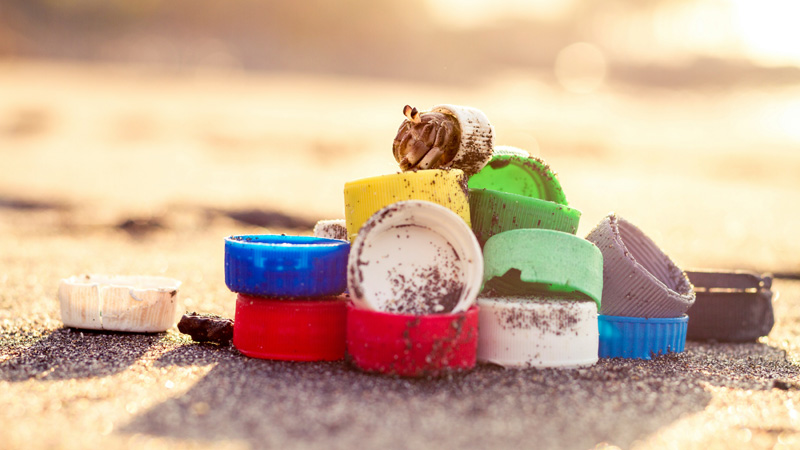
Photo by Mark Harpur on Unsplash
We will delve into the molting timeframe for hermit crabs of different sizes, including small, medium, and large crabs, to help owners better anticipate and accommodate their pets' needs.
Molting is a vital process for hermit crabs, enabling growth, regeneration, and reproductive success. By shedding their exoskeleton, hermit crabs can accommodate increases in size and repair damage to their shell caused by wear and tear. Molting also allows hermit crabs to regenerate lost limbs and appendages, ensuring their mobility and survival in their environment.
In addition to physical benefits, molting is also essential for reproductive processes in hermit crabs. Female hermit crabs undergo molting to produce eggs and reproduce, while male hermit crabs may molt to replenish sperm stores and participate in mating rituals.
The Molting Process
Molting is a natural and cyclical process that occurs throughout a hermit crab's life to accommodate growth and repair. It begins with the secretion of enzymes that soften the old exoskeleton, allowing the crab to break free from its confines. During this stage, the hermit crab may exhibit signs of restlessness and reduced activity as it prepares for molting.
Once the exoskeleton has sufficiently softened, the hermit crab begins the delicate process of shedding, or ecdysis. With careful precision, the crab removes itself from its old exoskeleton, starting with its legs and gradually working its way out. This phase can take several hours to complete, during which time the crab is vulnerable to injury and predation.
Following the shedding of the old exoskeleton, the hermit crab enters a period of post-molt recovery. During this time, the crab is unable to move as its muscles adjust to the new exoskeleton and regain control. This phase is crucial for the crab's survival, as it allows time for the new exoskeleton to harden and provide protection.
As the new exoskeleton gradually hardens, the hermit crab regains its mobility and strength. This process can take several days to weeks, depending on factors such as the crab's size, age, and environmental conditions. Once the new exoskeleton has fully hardened, the hermit crab emerges from its molted state, ready to resume its normal activities.
Time Required for Mmolting
Here are the frequencies and times required for each size category of small, medium, and large hermit crabs:
Small Hermit Crabs (1 to 1.5 inches)
Small hermit crabs fall within the size range of 1 to 1.5 inches. For this category, the molting process typically takes approximately 2 to 3 weeks to complete. These tiny crabs undergo molting every 1 to 3 months, depending on factors such as temperature, humidity, and nutrition levels. The frequent molts are necessary for their growth and adaptation to new shells that can accommodate their expanding bodies.
Medium Hermit Crabs (1.5 to 2 inches)
Medium-sized hermit crabs, ranging from 1.5 to 2 inches in size, require a longer duration to complete their molting cycle. The molting process for medium-sized crabs typically spans about 3 to 6 weeks. These crabs molt every 2 to 5 months, providing them with enough time to achieve the necessary growth required for the next stage of their lifecycle. Like their smaller counterparts, medium hermit crabs molt in order to find larger shells that better fit their increasing size.
Large Hermit Crabs (2 to 2.5 inches)
Large hermit crabs, measuring between 2 to 2.5 inches, have the longest duration for their molting process. It can take anywhere from 4 to 8 weeks for these crabs to complete their molt. Large hermit crabs generally molt every 4 to 10 months, requiring more time compared to smaller or medium-sized crabs due to their larger and more intricate exoskeletons. The occasional molts allow them to accommodate their continuous growth and find shells that meet their increasing size requirements.
Factors Influencing Molting Duration
Various factors can influence the duration of hermit crab molts across all size categories. Environmental conditions, such as temperature and humidity levels, play a critical role in the molting process. Additionally, the availability and quality of food, as well as housing conditions including tank size and substrate type, can impact the time it takes for a hermit crab to complete its molt. A well-maintained habitat and proper nutrition can contribute to healthier and more efficient molting cycles.
Substrate Type
The substrate choice can impact molting duration. A suitable substrate mix, such as sand and coconut fiber, provides the right consistency for digging and burrowing during molting. It should maintain proper moisture levels to support the softening and shedding of the old exoskeleton.
Temperature and Humidity
Proper temperature and humidity levels are essential for successful molting. Hermit crabs prefer temperatures between 75-85°F (24-29°C) and humidity levels of around 70-80%. Maintaining these conditions helps facilitate the molting process and ensures the new exoskeleton develops correctly.
Lighting
Hermit crabs are mostly nocturnal creatures, and exposure to excessive light can disrupt their natural molting patterns. Providing a natural light cycle with appropriate periods of darkness promotes normal molting behavior.
Hiding Spots
Hermit crabs require hiding spots, such as caves or shells, to feel secure during molting. These hiding spots protect them from predators and reduce stress. Sufficient hiding spots contribute to a smoother and quicker molting process.
Molting Challenges and Concerns
Jumbo hermit crabs (typically measuring over 2.5 inches) can face challenges during molting, particularly if they attempt a surface molt. Surface molting refers to the process of molting outside of a burrow or hiding spot, which is more common for smaller hermit crabs. Surface molting for jumbo hermit crabs can be risky and often leads to a higher risk of mortality.
During molting, hermit crabs require a sufficient amount of water to aid in swelling and breaking open their old exoskeletons. They store and absorb water in the soft tissues to facilitate this process. Excessive time spent in both freshwater and saltwater dishes can help provide the necessary moisture for the molt.
To increase the chances of survival during molting, it is important to create an environment that supports the natural behavior and needs of the hermit crab:
Providing Appropriate Substrate: Offer a deep substrate (such as a mixture of sand and coconut fiber) in the enclosure to allow hermit crabs to dig burrows. This gives them a safe place to molt and reduces the risk of surface molting.
Maintaining Optimal Humidity: Ensure the habitat is properly humidified to prevent the drying out of the exoskeleton during molting. This can be achieved by misting the enclosure regularly or using a humidity gauge and appropriate misting system.
Offering Multiple Water Dishes: Provide several dishes with fresh water and saltwater in the enclosure. Jumbo hermit crabs require ample amounts of water to store and use during molting.
Avoiding Disturbances: Minimize disturbances and stressors during molting. Avoid handling the hermit crab or making excessive noise or movements near their burrow or hiding spot.
Conclusion
In conclusion, molting is a complex and vital process in the life of a hermit crab, enabling growth, repair, and regeneration. From the softening of the exoskeleton to the hardening of the new shell, each stage of molting plays a crucial role in the crab's development and survival.
Small hermit crabs typically molt every 1 to 3 months, taking approximately 2 to 3 weeks to complete the process. Medium hermit crabs molt every 2 to 5 months, with a molt duration of 3 to 6 weeks. Large hermit crabs have the longest molting cycle, occurring every 4 to 10 months and taking about 4 to 8 weeks to finish.
Please note that these durations and frequencies are general guidelines and can vary based on factors such as temperature, humidity, nutrition levels, and individual crab health. It's always important to observe your hermit crab closely to determine their specific molting patterns and adjust their care accordingly.
You May Also Like
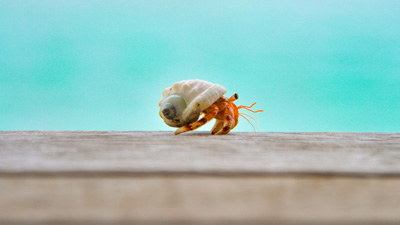 Other PetsThe 5 Most Common Pet Hermit Crabs
Other PetsThe 5 Most Common Pet Hermit Crabs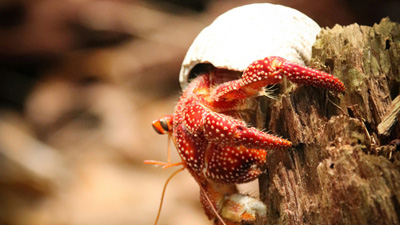 Other PetsHow Big of a Tank Does a Hermit Crab Need? (10-20 gallon)
Other PetsHow Big of a Tank Does a Hermit Crab Need? (10-20 gallon)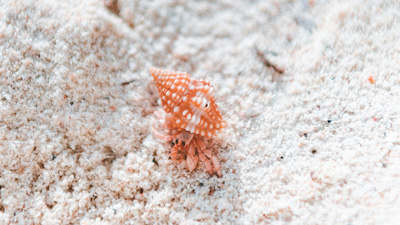 Other Pets50+ Hilarious Hermit Crab Names That'll Make You Crack Up!
Other Pets50+ Hilarious Hermit Crab Names That'll Make You Crack Up!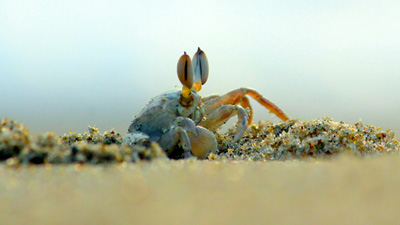 Other Pets10 Favorite Snacks for Hermit Crabs Healthy
Other Pets10 Favorite Snacks for Hermit Crabs Healthy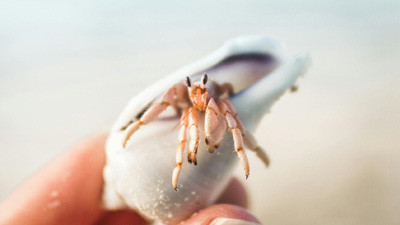 Other PetsWhat Can Hermit Crabs Not Eat? 13 Food Categories to Avoid
Other PetsWhat Can Hermit Crabs Not Eat? 13 Food Categories to Avoid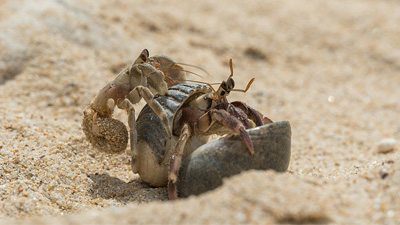 Other Pets8 Types of Shells Preferred by Hermit Crabs
Other Pets8 Types of Shells Preferred by Hermit Crabs